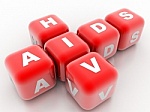How does HIV spread in the body ? HIV spreads by the six steps of Entry of HIV into the cells, Reverse Transcriptase, Integration, Transcription, Translation, Assembly and budding
How does HIV spread in the body ?
There are six steps through which the HIV multiplies and affects the cells in the body
Entry of HIV into the cells:
Some cells of the immune system contain a molecule called CD4 on their surface. CD4 molecules are also found on the T cells. When the HIV virus enters the body, it first identifies cells with CD4 and attaches itself to them.
Once the HIV binds with the virus and the membrane of the virus and the T cells fuse. As a result of this fusion, the virus RNA, proteins and enzymes enter the T cells.
It is important to remember that although the main target for HIV is the T cells, it also attaches itself to other types of white blood cells containing CD4 but does not destroy them.
These cells can act as reservoirs of HIV if the natural defense mechanism of the body tries to destroy the HIV.
Reverse Transcriptase:
Once the RNA, proteins and enzymes of the HIV enter the cytoplasm of the T cells, an enzyme called “reverse transcriptase” present in HIV converts RNA into DNA, which is an abbreviated form of nucleic acid that carries genes, the basic unit of genetic inheritance.
Integration:
In this stage, the newly formed DNA of the HIV enters the T cells nucleus and is incorporated into its genes.
Thus when the T cells multiplies, the virus DNA is also copied. A person infected with HIV may contain billions of cells containing the HIV DNA.
Transcription:
The T cells that contain HIV/DNA cannot produce new viruses unless the RNA is able to make its own copies. It is important that these RNA are read by the protein making mechanism of the infected T cells.
To enable production of RNA copies and therefore to allow multiplication of new viruses, a special type of RNA called “messenger RNA” is produced. The process of production of messenger RNA is called transcription.
This process involves the enzymes of the infected T cells. The genes of HIV and the protein making mechanism of the T cells together control the process of transcription.
Translation:
After the messenger RNA of the HIV is processed by the nucleus of the infected cell, it is sent into the cytoplasm.
In the cytoplasm, the virus collaborates with the T cells protein making mechanism to make long chains of proteins and enzymes of HIV.
The messenger RNA acts as a template or guide for protein production of HIV proteins and enzymes. The process of making long chains of HIV proteins and enzymes is called translation.
Assembly and budding:
In this stage, the newly made HIV proteins, enzymes and RNA collect just inside the wall of the infected T cells. At the same time, the proteins that form the covering of the virus collect within the wall of the infected T cells.
Next, an immature particle of the virus is formed and it separates from the infected T cells. This new viral particle has an envelope that includes protein from the walls of both, the HIV and the infected T cells.
It is important to remember that the immature virus does not spread the infection to other people. The long chain of proteins and enzymes formed inside the infected cells are cut into smaller pieces by a specific enzyme of the virus called protease.
This step results in the formation of viral particles that can spread infection to other T cells.
How does HIV spread in the body and affect the body ?
HIV destroys a particular variety of white blood cells WBCs that are essential for destroying disease-causing germs. There are several varieties of white blood cells in the human body.
Of all these, lymphocytes form about twenty five percent of the total white blood cells count in the body.
They cells normally increase in number in response to any infection. There are two types of lymphocytes: (a) B cells and (b) T cells.
When the B cells come in contact with a disease causing agent such as bacteria or virus, they secrete large volumes of antibodies chemical substances that can destroy the disease causing germs.
The main functions of B cells are to search, identify and then bind with the diseases causing germs.
The T cells are lymphocytes that have traveled through a small gland called the thymus gland, which is situated in the middle and upper part of the bonny cage of the chest.
When a disease causing germ enters the body, the T cells produce several new copies of itself. Each T cell contains chemical substances that can destroy the specific disease causing germs.
T cells are also called “killer cells” because of their two main actions, which are they secrete chemical substances necessary for destroying the disease causing germs and they help the B cells in destroying the agents.
HIV is more dangerous than other viruses because it attacks these T4 cells that are essential for the body’s natural defense mechanism.
It is also worth mentioning that HIV / AIDS is not transmitted by sharing clothes and towels, nor by eating in the same utensils or sharing the same toilets. These are some of the myths and facts about HIV transmission.
Describe the structure of HIV virus ?
Just as all viruses, the HIV is also a very small infectious particle that can be seen only through an electron microscope. The virus is so small that when about ten thousand viruses are put together in a circle, they will have a diameter of about one millimeter.
It consists of an outer coating of fat. This fat layer has two types of special particles, GP-120 and GP-41. GP is the short form for glycol-protein, which means a sugar containing protein. GP-120 helps the virus to first attach itself to the cells and then attack them.
GP-41 also plays a role when the virus is ready to attack the cells. Below the fat layer containing the glycol- proteins are two protein layers called P-24 and P-17.
P-17 is the protein in the inner shell and is suspected to produce the surface of the HIV. P-24 is the core protein and it surrounds two strands of RNA, which is the short form for ribonucleic acid.
The RNA is normally present in the central part of the cell called “nucleus” and its surrounding part called “cytoplasm”. It transmits the instructions from the nucleus to the cytoplasm. In the cytoplasm the RNA mainly assembles proteins.
Each strand of RNA in the HIV contains a copy of nine genes, which are the biological units of genetic material and inheritance. Three of these nine genes contain information necessary to make proteins for new viruses.
The other genes contain information necessary for the production of proteins that are important for their ability to infect a cell, produce a new copies or cause diseases.
At the end of each strand of RNA is an enzyme called “reverse transcriptase”. This enzyme helps the HIV to take over the human cells.
RELATED TOPICS
Health insurance companies in UK


